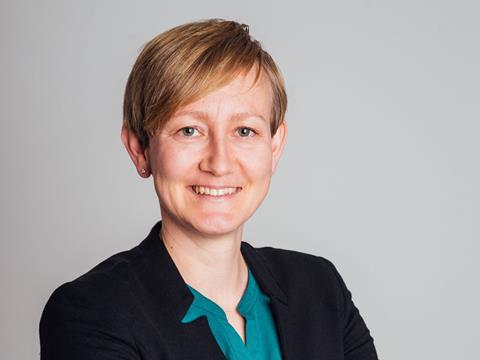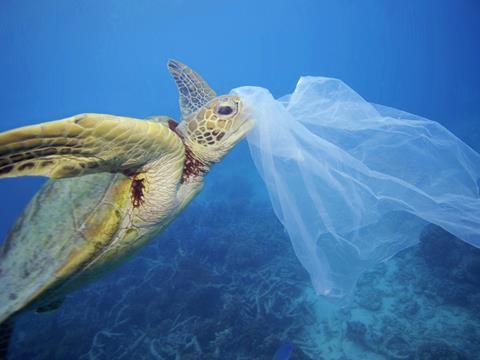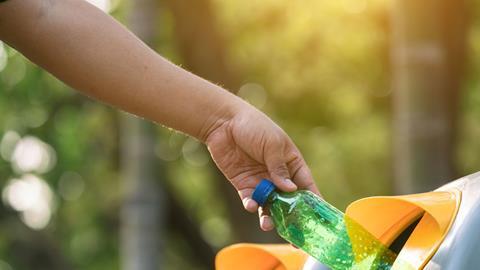Sophie Kieselbach is a senior consultant at Sphera, specialising in life cycle assessment and sustainability. She speaks with Elisabeth Skoda about challenges and opportunities for packaging, and what light the current pandemic crisis sheds on creating a sustainable future.
ES: What would you identify as the biggest challenges the packaging industry has to face this coming year and beyond?
SK: Packaging, especially plastics packaging, gets a lot of negative publicity – people forget that it does have a purpose. I just recently read the article on Packaging Europe about the new EU Commissioner for the Environment thinking out loud about completely banning plastics packaging. We cannot afford this from a material technological point of view, especially on a big scale. Last year, Earth Overshoot Day, the day on which we exhaust resources the planet can renew, was on July 29th. We already use far too many resources. In that context, getting rid of an entire material group is ludicrous, it just means shifting the problem around.
Having said that, even though there are many wonderful, innovative, and sustainable products out there, for many companies in the packaging industry it is still business as usual.
There are some exciting ideas out there, for example presenting cosmetics in powder form and telling the consumer how to mix with water, which enables the use of less packaging. It is important to keep the big picture in mind, but of course that is difficult in everyday business life. You need time, money and the will to take risks to change something. However, if you don’t change, you might fall behind your more adventurous competitors. You also face risks you may not be able to control at some point.
I’m always pleased when somebody rethinks their product, as it shows they understand the problem, that packaging depends on the product you manufacture and how much you sell of it.
It is important to make sure that a pack is recycled, but ideally we should start a lot earlier, to make sure a pack can be reused and is as efficient as possible, and also think about changing the product in a way that it maybe needs less packaging. Sphera strongly focuses on the ecological side of the sustainability debate, and less on the economic or social side. Unfortunately, the one sustainable pack does not exist. We have to find the right balance, which is challenging.
ES: A lot has happened since we originally spoke, and the coronavirus pandemic has changed the world we live in. What would you consider the biggest challenges for the packaging industry in this context?
SK: There are two main points. Firstly, if you don’t know your supply chain and the risks within it, you are not fit for the future.
Secondly, we are indeed capable of huge transformations if the will and the motivator is just big enough. Though this transformation may cost a lot of money and might result in the reshuffling of jobs and other resources, it is definitely worth the investment. Such crises are bound to come again and again, and we should be prepared and plan accordingly so next time it won’t hit us as hard and unexpectedly.
Every company out there has been affected one way or the other and I hope that companies are willing to learn from that. Learn that change is inevitable and that you need to have some emergency measures ready for implementation, to react to certain risks. Learn that speeding up reaction times is of the essence. Translating that to packaging: all the problems we were talking about before the crisis are still there, they (unfortunately) didn’t disappear. The legal requirements are in place, plastic is still in the oceans and we still have a giant waste problem to solve. The public demand for plastic-free products might have changed a bit throughout the crisis, but that doesn’t mean that we can stop with everything we did before. I would even state that it is crucial that sustainability efforts in packaging are embedded in a sustainability strategy and that they remain embedded throughout the crisis. This crisis now has links to humanity’s impact on the environment. The next one is likely to be linked, too, and may get even bigger.

ES: During this crisis, consumers seem to be drawn to packaged goods, whereas there is a drop in demand for fresh, unpacked produce. Do you expect this trend to last?
SK: I do not expect it to last to that extent beyond the crisis. The more important question is: how long will this crisis last, and has the move towards a packaging-free world been thought through? Can it be embedded in crisis mode? Not really. Then we might need to invest our efforts differently. Right now, some people are really scared to contaminate themselves or do not want to buy food for a long time, so they buy items with a long shelf life. I assume that we will see a shift back afterwards even though it might be not as strong as we have seen before the crisis.
ES: Back to the question of sustainability. What roadblocks to more sustainable packaging have you identified?
SK: The political framework is still somewhat lacking. On the one hand, there are laws that prescribe the use of recycled content in packaging and to make packaging recyclable, as is the case for example in Germany with the packaging law. But it is not easy for recyclers to invest or expand capacities as they do not have guaranteed buyers for their products. This could change in the future, but in countries like the US, for example, if recycling companies’ capacities are full, the waste ends up in landfill. If the price for primary aluminium is lower than for recycled aluminium, recyclers can’t sell their recycled aluminium. As soon as there is a cheaper alternative, the market will choose that. For example, in Pennsylvania, a massive site is planned to manufacture polyethylene from fracking gases – this very cheap polyethylene is likely to undermine efforts happening in other areas. The incentive is lacking to use recyclate. It’s not enough to rely on the market, there needs to be some support via subsidies or taxes that tie in with such regulations that the infrastructure can grow organically with the demand.
ES: What effects do you expect from the single-use plastic bans around the world?
SK: Some countries have already completely banned single-use plastics, and in that way managed to solve some of the visible waste problems. More and more countries will jump on the ban bandwagon and more items will be added to the list of items that can’t be produced anymore. The core of the issue is, however, that there aren’t the proper waste collection systems in place and that people aren’t well enough educated on how to dispose of packaging properly. Many countries still have work to do in that area, even in Europe.
The single-use plastic plan has quite successfully managed to solve some of the more visible waste problems, but the difference is mostly cosmetic. The bigger issues still need to be addressed. It is suspected that some of the big plastic “islands” in our oceans don’t originate from the rivers, but from trade ships that dump their rubbish. The problem of exporting rubbish to different countries still exists, even though some importers such as China stopped the practice. The problem hasn’t been solved, but just shifted.

ES: How can packaging be more resource-efficient?
SK: Nothing is gained if people use ten paper bags instead of one plastic bag. It’s about the mindset. We really should reuse products and packaging until they fall apart and cannot be repaired anymore. Then they can go into a different cycle. If we treated all our materials as the valuable commodities they actually are, we would have a lot fewer problems. But, of course, that’s not in the direct business interest, which currently is driven by steadily growing consumption. The market economy now doesn’t go together well with sustainability. A working circular economy would entail reusing for as long as possible, repairing, and then recycling. Unfortunately, we often start at the latest possible point, which is recycling. It is important to recognise what is produced and for whom and for what purpose, that is how new ideas emerge.
ES: What potential do you see for design for recycling, reusable packaging and chemical recycling?
SK: Design for recycling is important, keeping in mind the purpose of both the product and the pack. Reusable packaging is great but it’s important to educate consumers that they have to actually reuse it even if it’s not so modern or beautiful looking anymore. If reusable packaging also had a recommendation on the ideal number of reuses, customers would be better informed of what they need to do, to actually make a change. Chemical recycling is an interesting approach. My dream would be to recycle mechanically what is possible, and then move on to chemical recycling. If we managed to keep plastics in a very long cycle, we would gain a lot. There is a lot of hope in chemical recycling, especially if it is used not just for a fraction, but for all plastics that currently end up in landfill. But sustainability is a complex, interwoven system, and you can’t save the world with one measure.













